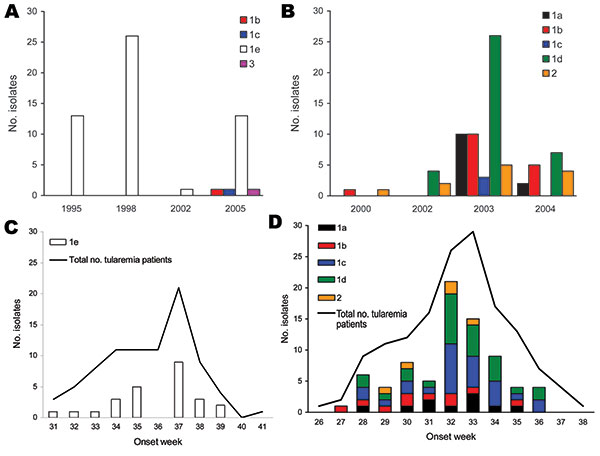Volume 15, Number 12—December 2009
Research
Landscape Epidemiology of Tularemia Outbreaks in Sweden
Figure 6

Figure 6. Proportional representation of genetic groups among isolated recovered per year for Ljusdal (A) and Örebro (B) and seasonal distribution of genetic groups of Francisella tularensis subsp. holarctica in 1998 in Ljusdal (C) and in 2003 in Örebro (D), Sweden. The week of disease onset was available for 84/87 patients in Ljusdal and 148/152 patients in Örebro.
Page created: December 09, 2010
Page updated: December 09, 2010
Page reviewed: December 09, 2010
The conclusions, findings, and opinions expressed by authors contributing to this journal do not necessarily reflect the official position of the U.S. Department of Health and Human Services, the Public Health Service, the Centers for Disease Control and Prevention, or the authors' affiliated institutions. Use of trade names is for identification only and does not imply endorsement by any of the groups named above.